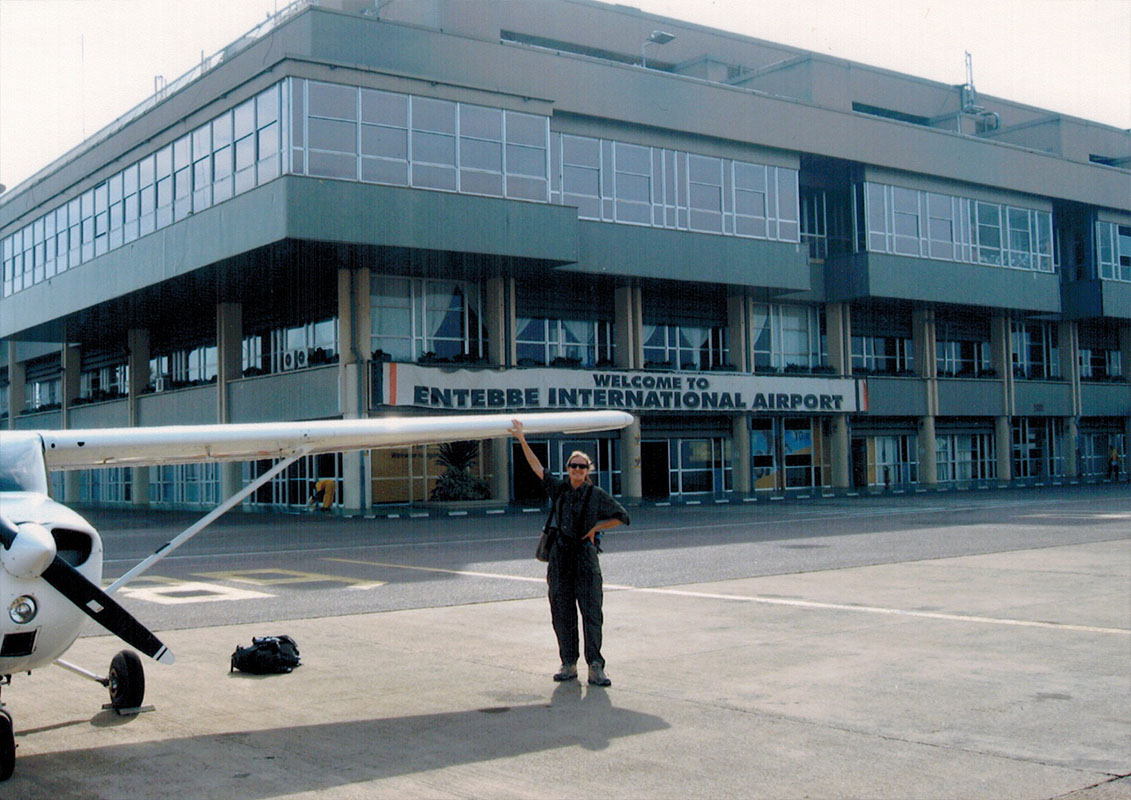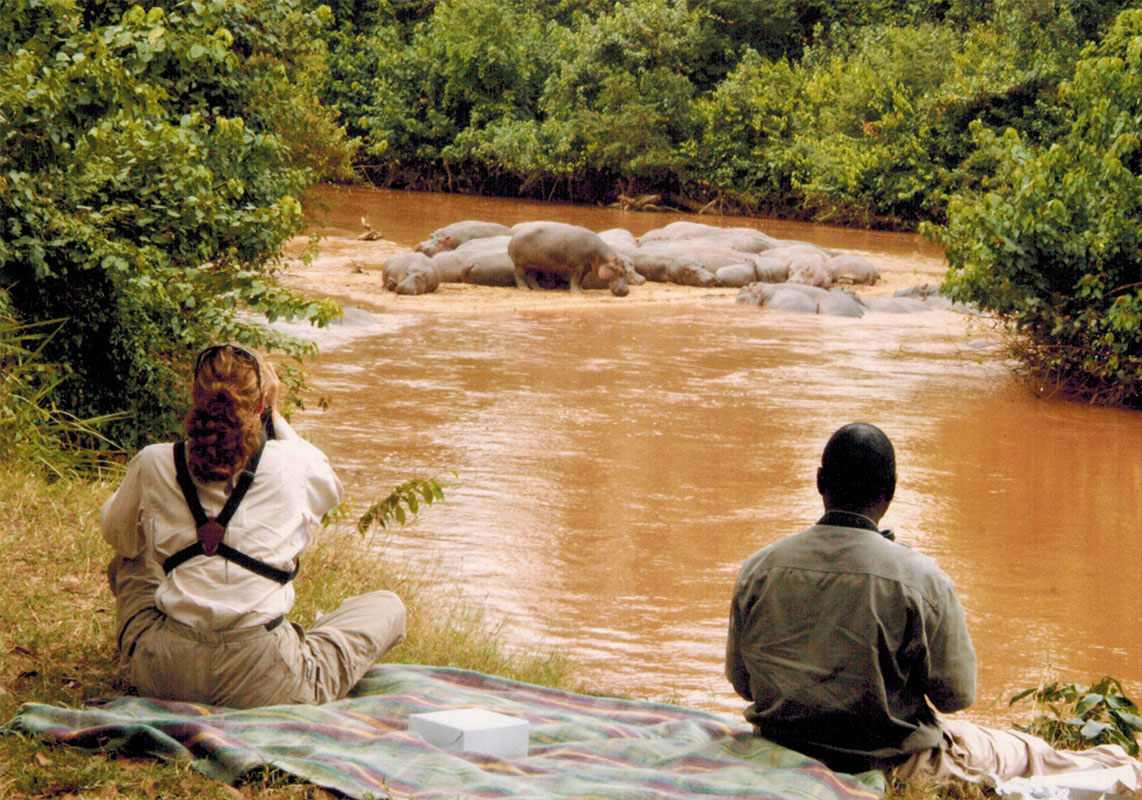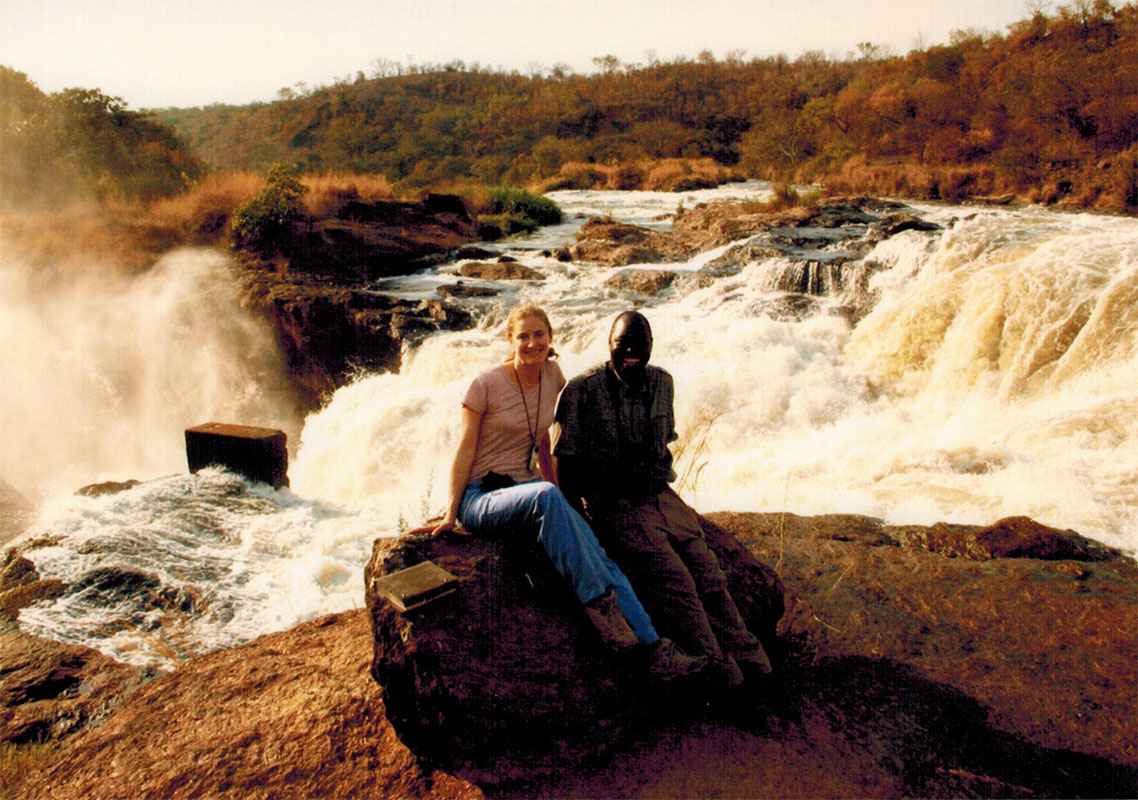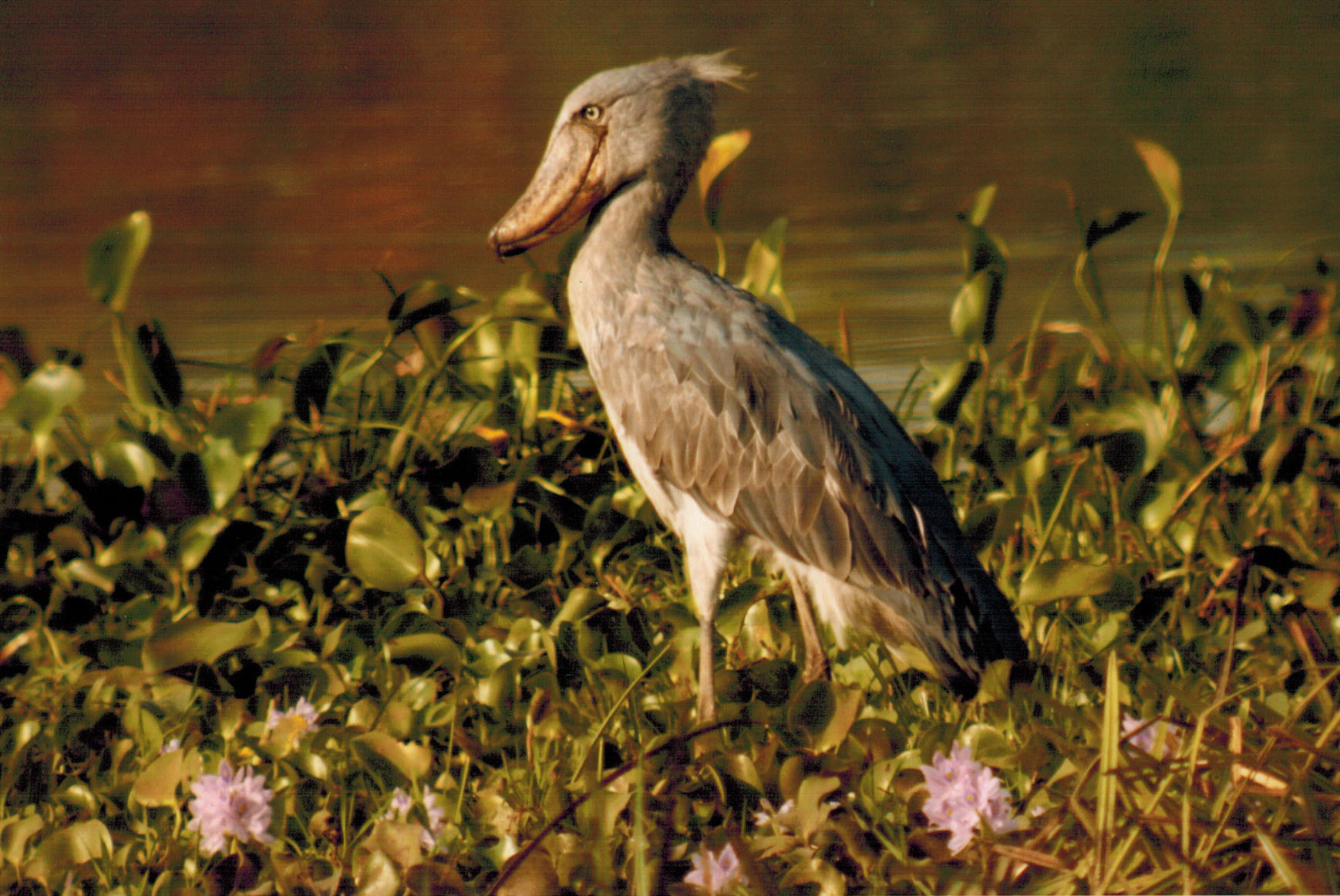
Upon hearing the word Uganda many people think of Idi Amin and his terrible regime, but the days of political turmoil are thankfully over. However, I did notice on the map that several areas were marked “roads here may be mined” or “warning — civil unrest” but those were mostly in the north bordering Sudan or in the southwest near Rwanda and Congo. We were planning to go to the southwest for some gorilla trekking, though, so I decided not to tell my traveling companion, Dennis, about the dangerous parts to save him the hand-wringing.
Half-submerged Pink Eclairs
We flew in to Entebbe late at night and caught a few hours’ rest before taking off the next morning in a bush plane to Murchison Falls National Park, flying over mostly dry country due to recent droughts, but the land was peppered with heavily forested patches resembling broccoli from the air, as well as varicose veins of vegetation lining the abundant streams and waterways. As we flew over the Victoria Nile, below the impressive Murchison Falls we could see tiny crocodiles and hippos lining the riverbank. From the air the hippos looked like pinkish, half-submerged clusters of eclairs. We also flew over giraffes, elephants and waterbuck before landing to meet our driver and guide, Benjamin.
Ben looked like Louie Armstrong and had a big, hearty, open-mouthed laugh and called Dennis “Dan” throughout the trip no matter how many times he heard me refer to him as “Dennis.” Perhaps it was his strong accent — he referred to birds as “punching” when he meant “perching” and transposed his L’s and R’s like the Japanese do. Nice guy, and fantastic birder.

We drove through acacia-filled savannah habitat stopping frequently to check out the bird life and mammals, including lots of oribi (small antelope that have a two-note alarm call that sounds like a whistling snort), warthogs, cape buffalo, kob (a somewhat larger antelope), the shy and hard-to-see patas monkey, and of course, birds galore. At our lunch stop under a tree not far from the water’s edge we were too busy checking out all the wildlife to get much food in our bellies.
Monkeying Around at Nile Safari Camp
After a full day of driving around the park we made it to the 12-hut Nile Safari Camp perched above the south bank of the Nile shortly before nightfall. There we were greeted by a troop of vervet monkeys feeding and grooming one another in a large tamarind tree in the center of camp next to the open-air thatched bar and dining pavilion. This was a regular hangout for them, but despite their apparent friendliness, the camp staff did not feed them so they remained wild.
Our large, private tent-cabin overlooked the river with a verandah out front and an outdoor shower in the back. It was interesting to bathe al fresco under a bucket with the moon and stars above, bats squeaking and a gecko eyeing me curiously. Hippos grunted, snorted and sloshed about in the river below all night, making me thankful I had earplugs. At times I couldn’t tell Dennis’ snoring from the hippos — they sounded like cars trying to start on a cold day. In the middle of the night, a bat flapping around in our tent awoke Dennis and he had to lure it outside to get some rest. The next morning we had a quick breakfast under the vervet-filled tree and then found some impish ones crawling around on our tent, peering in through the screens like little spies.
Murchison Falls
We then set off for the ferry dock to take a boat upriver to see Murchison Falls. At the jetty we came across an apparently rare bird for Uganda — the beautiful Egyptian plover. From the boat we saw literally tons of hippos (large males can top 7,000 pounds!) at close range. These funny creatures twirled their ears and gave us wary, squinty looks, harrumphing and spraying mist from their submerged nostrils as we drifted past. We also saw lots of waterbucks (even larger antelopes that are good swimmers), many species of kingfishers and bee-eaters, and black-and-white colobus monkeys foraging in the trees.

Closer to the falls, clumps of foam resembling meringue floated on the water’s surface — not pollution but a result of the enormous power of the water rushing through the seven-meter gap in the rocks above that forms Murchison Falls. Later in the day we drove to the top of the falls and hiked around there to get a different perspective.
Birding University with Ben
We also spent more time driving on the south side of the park looking for birds. Ben put me through the wringer on bird identification; I felt as if I was at Birding University. He would always say to me, “Check the markings — then we go to the bible” — the “bible” being the book “Birds of East Africa” that I had tried desperately and unsuccessfully to get my hands on before leaving the States. My field guide was a very poor imitator with outdated taxonomy and nomenclature for the birds, but luckily Ben had the Good Book. It was a real challenge for me and sometimes we wasted time as I tried to find the bird in the book on my own. At times I was frustrated that Ben knew the birds but wouldn’t tell me what they were. However, he wanted to help me sharpen my skills of observation and identification, and that he did for sure. I ended up finding a new copy of the “bible” at a lodge gift shop a few days later and paid dearly for it, by the way, but it was worth every penny.

One of Uganda’s biggest claims to fame, bird-wise, is the shoebill. On our final morning in the park we set out with Ben joined by Ranger George, armed with an AK-47 in case we had to walk far from the car, to find this elusive bird. Find it we did, at the river’s edge in a patch of water lilies. This giant member of the stork family stands about four feet tall and has a huge bill that looks like a clog — very impressive! We did a little more bird and wildlife spotting on our way to the airstrip to catch another bush plane to our next destination — Fort Portal near the Rwenzori Mountains that form the western boundary of the country.